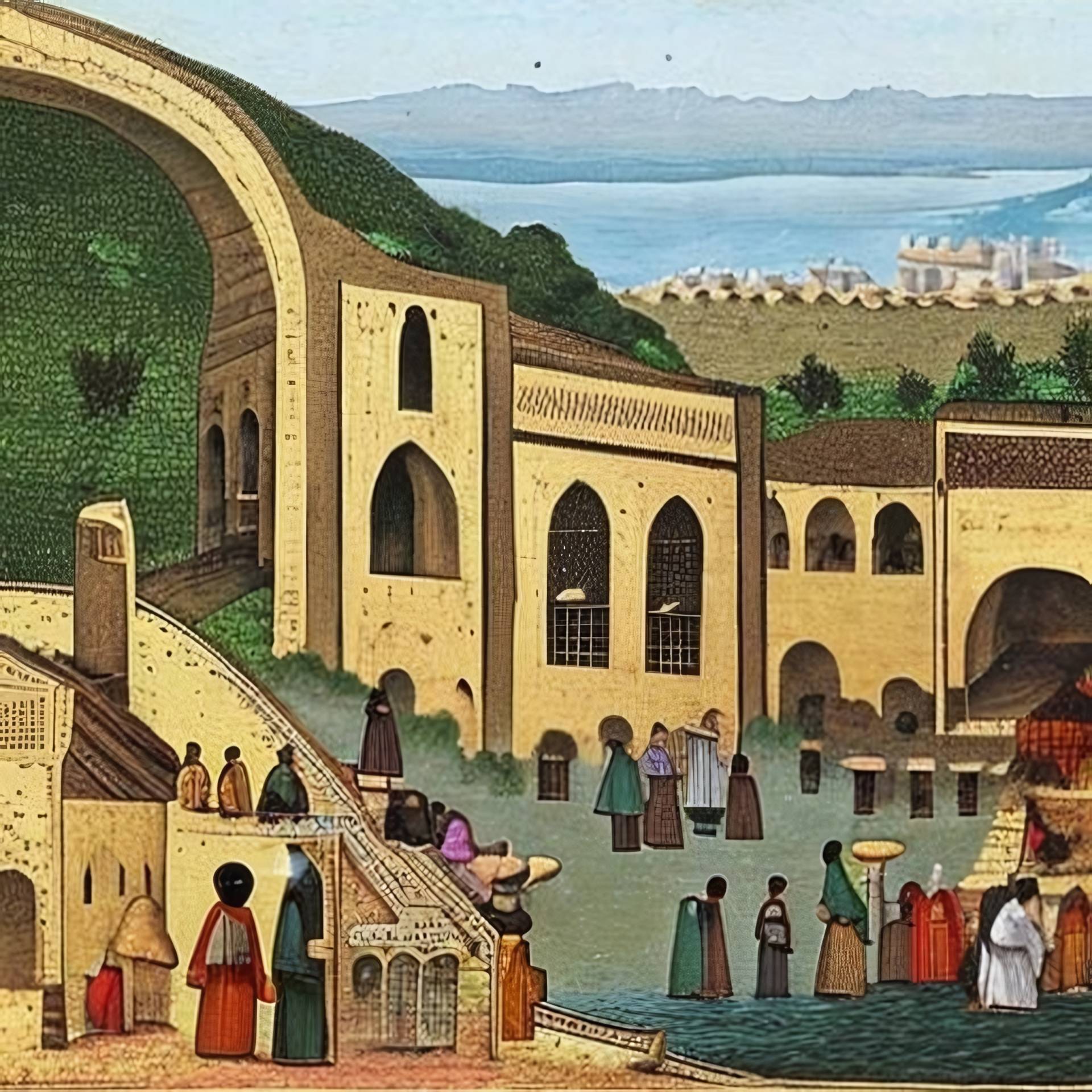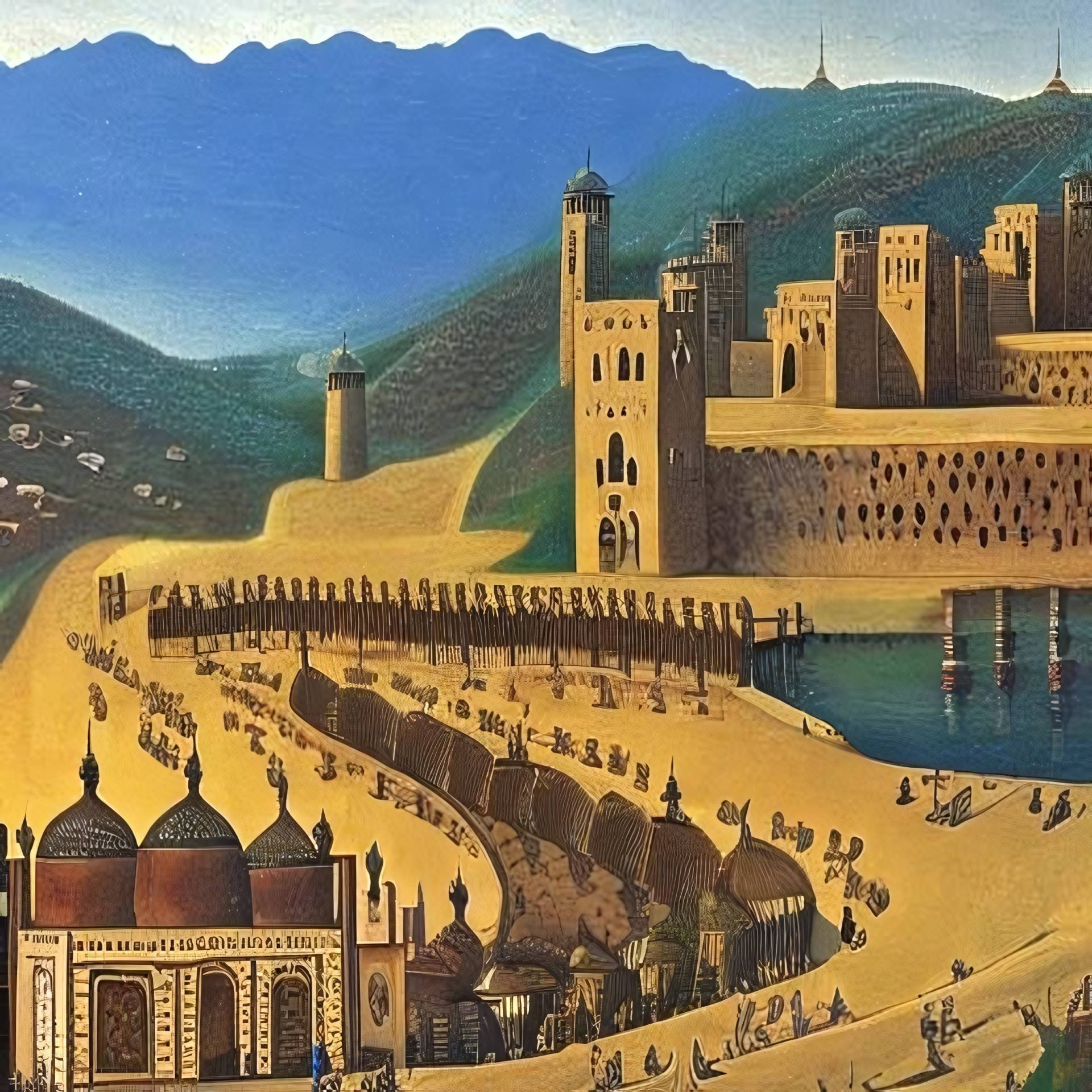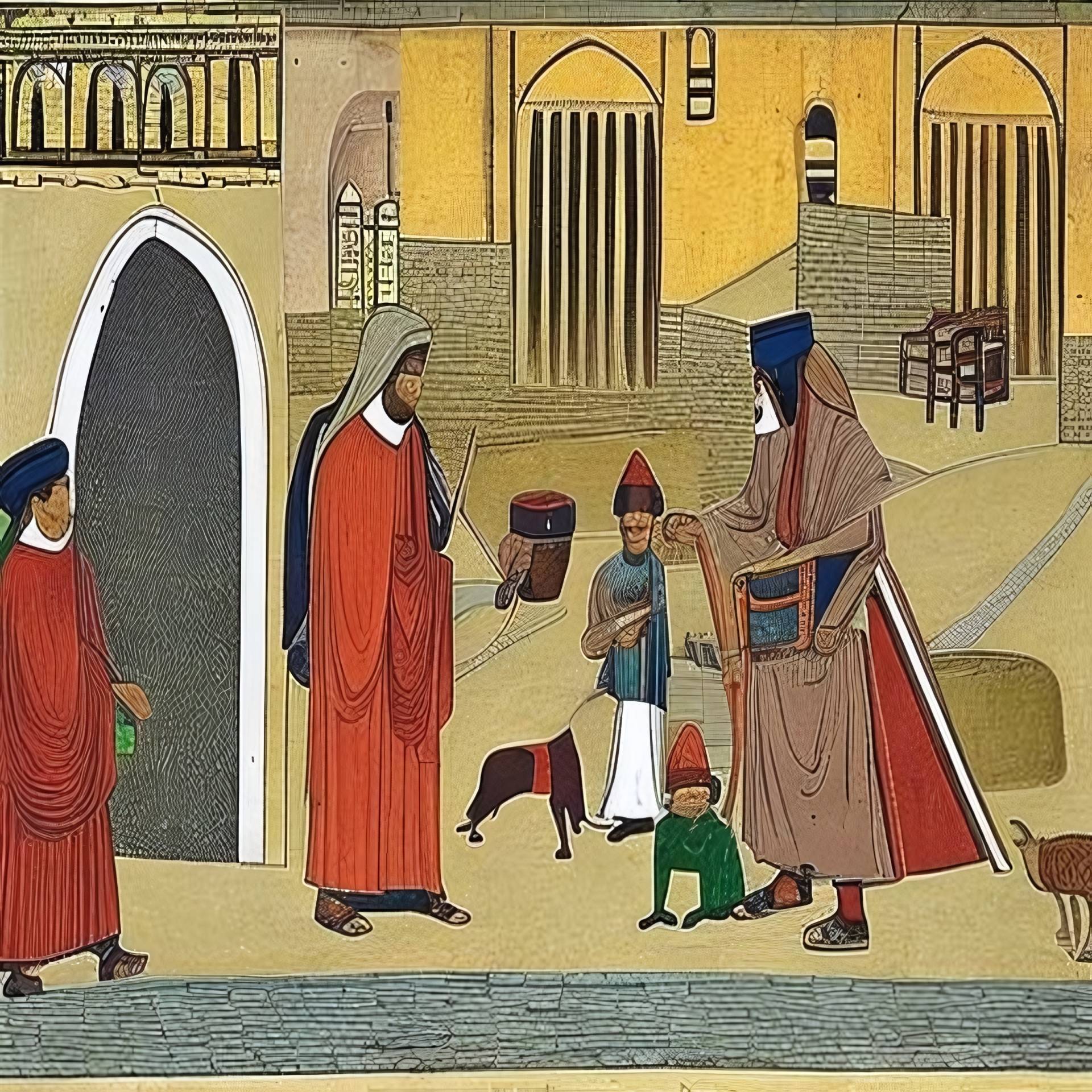The Sultanate of Ifat was a medieval Sunni Muslim state that existed in the eastern regions of the Horn of Africa between the late 13th century and early 15th century. It was one of several Muslim kingdoms that emerged in the area as a buffer between the Christian Ethiopian Empire and the coastal Muslim states. It was also a centre of trade, culture and religion, with connections to Arabia, Egypt and Indian.
The Origins of Ifat
The origins of Ifat are shrouded in mystery and legend. According to some sources, the founder of the dynasty that ruled Ifat was Umar ibn Dunya-huz, a descendant of Ali, the cousin and son-in-law of the Prophet Muhammad. He came to the region from Arabia and married a local princess named Fatima. He then established his capital at Wafat, a city near the Awash River in present-day Ethiopia.
Other sources, however, suggest that Umar ibn Dunya-huz was not an Arab but an Argobba, an ethnic group that still lives in eastern Ethiopia today. They claim that he was a local chief who rose to power by allying with other Muslim groups in the region, such as the Harla and the Somali. He then expanded his domain by conquering the neighbouring Sultanate of Shewa, which was ruled by another Muslim dynasty, the Makhzum.
Regardless of his origins, Umar ibn Dunya-huz is credited with founding the Walashma dynasty, which ruled Ifat and later Adal for over two centuries. The name Walashma comes from an Arabic word meaning “the people of Fatima”, referring to Umar’s wife. The Walashma claimed to be related to the Banu Makhzum tribe of Mecca, which was also the tribe of Khalid ibn al-Walid, a famous general of early Islam.
The Rise and Fall of Ifat
The Sultanate of Ifat reached its peak of power and prosperity under the reign of Sa’ad ad-Din II (1363-1412), who is also known as Sabr ad-Din II or Amir Sabr ad-Din. He was a visionary leader who embarked on a series of military campaigns against the Ethiopian Empire, which was ruled by Emperor Amda Seyon I (1314-1344) and his successors. Sa’ad ad-Din II managed to capture several Ethiopian provinces, such as Dawaro, Bale and Fatagar, and even threatened the Ethiopian capital at Debre Berhan. He also forged alliances with other Muslim states in the region, such as Adal, Hadiya and Zeila. He also patronized trade, learning and art, and built many mosques, schools and palaces in his capital at Zeila, a port city on the Gulf of Aden.
However, Sa’ad ad-Din II’s ambitions also provoked a strong reaction from the Ethiopians, who rallied under Emperor Yeshaq I (1414-1429). Yeshaq I launched a counter-offensive against Ifat and recaptured most of the lost territories. He also besieged Zeila and forced Sa’ad ad-Din II to flee to his brother’s domain in Adal. Sa’ad ad-Din II died shortly after in 1412, leaving behind a weakened and divided kingdom. His son Jamal ad-Din II succeeded him as the Sultan of Ifat, but he could not resist the Ethiopian pressure and eventually surrendered to Yeshaq I in 1415. He was taken prisoner and converted to Christianity, ending the Walashma rule in Ifat.
The Legacy Of Ifat
The Sultanate of Ifat may have been short-lived, but it left behind a rich legacy in terms of culture, religion and history. It was one of the first Muslim states to challenge the Ethiopian hegemony in the Horn of Africa and paved the way for the rise of Adal, which continued the struggle against Ethiopia until the 16th century. It also contributed to the spread of Islam and Arabic language in the region, especially among the Argobba, Harari and Somali people. It also produced many scholars, poets and historians, such as Ibn Hajar al-Asqalani, who wrote a famous biography of the Prophet Muhammad, and Shihab al-Din Ahmad al-Ghazi, who wrote a chronicle of the Ethiopian-Adal wars.
The Sultanate of Ifat also left behind many archaeological remains, such as the ruins of Wafat, Zeila, Asbari, Nora, Masal, Rassa Guba and Beri-Ifat. These sites reveal the architectural and artistic styles of the Walashma dynasty, which combined local and foreign influences. Some of the most notable features include the stone mosques with mihrabs (niches indicating the direction of Mecca), the tombs of the sultans and their families, and the inscriptions in Arabic and Ge’ez (the ancient Ethiopian language).
The Sultanate of Ifat may have been forgotten by many, but it deserves to be remembered as a remarkable kingdom that shaped the history and culture of the Horn of Africa.
References
– Sultanate of Ifat – Wikipedia https://en.wikipedia.org/wiki/Sultanate_of_Ifat
– Walashma dynasty – Wikipedia https://en.wikipedia.org/wiki/Walashma_dynasty
– Bahru Zewde (2002). A History of Modern Ethiopia, 1855–1991. Oxford: James Currey. p. 17-57
– Spencer Trimingham (1976). Islam in Ethiopia. London: Frank Cass & Co. Ltd. pp. 55-57.
– Taddesse Tamrat (1972). Church and State in Ethiopia 1270–1527. Oxford: Clarendon Press. pp. 192-205.
– Richard Pankhurst (1997). The Ethiopian Borderlands: Essays in Regional History from Ancient Times to the End of the 18th Century. Lawrenceville: The Red Sea Press. pp. 255-256.
– Enrico Cerulli (1956). Ethiopia’s Relations with the Muslim World. Rome: Istituto per l’Oriente. pp. 47-48.
Tags
Divi Meetup 2019, San Francisco
Related Articles
Unappreciated Greatness
Life and Legacy of Jahangir of the Mughal Empire. Jahangir ruled over one of the largest empires in human history during his lifetime, yet few people outside of South Asia have heard of him. I aim to shed light on the life and legacy of this remarkable figure,...
The Plague Doctor’s Diary
A Personal Account of the Turin Epidemic of 1656. I am writing this diary to record my experiences and observations as a plague doctor in Turin, the capital of the Duchy of Savoy, during the terrible epidemic that has afflicted this city and its surroundings since the...
The Timeless Beauty of Bustan
Unveiling the Secrets of Saadi Shirazi's Masterpiece.In the realm of Persian literature, few works have captured the essence of love, spirituality, and morality quite like Bustan (The Orchard) by Saadi Shirazi. This 13th-century masterpiece has left a lasting impact...
Stay Up to Date With The Latest News & Updates
Explore
Browse your topics of interest using our keyword list.
Join Our Newsletter
Sign-up to get an overview of our recent articles handpicked by our editors.
Follow Us
Follow our social media accounts to get instant notifications about our newly published articles.









